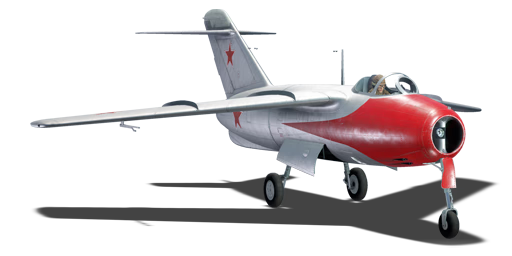



Shortly after the end of WWII in Europe, the Soviet Union outlined the design requirements for a future fighter aircraft powered using their newfound jet technology from the Germans. As a result, many of the well-established design bureaus of the time began work on a indigenous jet fighter. Sukhoi began studies with their Aircraft K prototype, Mikoyan began working on their I-310 prototype, Yakovlev started the Yak-15 family, and not to be left behind Lavochkin initiated Project 52, a proposal for a jet powered fighter-interceptor drawing from the captured plans and designs of the German Ta-183 which was never built. Project 52 differed from the MiG-15 and later Yak-30, as the project was for not one, but two aircraft. These two aircraft were designated Aircraft 174 and Aircraft 174D, the only difference being that 174 used the reverse engineered Rolls-Royce Derwent engine, while the latter 174D used the Rolls-Royce Nene engine. In the end, the Derwent (redesignated as the Klimov RD-500) powered prototype was chosen to enter production as the La-15. The La-15 would enter service officially in 1949 and 235 of the type would be produced, before production (and service) was cut short when it was retired quickly in 1953 due the advent of more advanced aircraft with supersonic capability, such as the new MiG-19 and two years later, the first prototypes of the MiG-21.
The La-15, introduced in Update 1.39, is a special jet that lies somewhere in the middle of the jets at its tier due to its wings being incredibly weak for the engine it possesses, allowing you to easily rip your wings in level flight. However, due to the battle rating and the speeds that jet combat is usually fought at, the La-15 can be classed as an underestimated jet, relying on the curse of its absurdly strong engine performance to best its opponents. The aircraft functions best at slow to medium speeds, where it's not going too fast and suffering from compression, but where it's slow enough to turn with its opponents or accelerate away from them quickly due to its powerful engine. Medium speed boom-and-zoom tactics are advised, with the ability to retain its energy well for a few turns when needed thanks to the great engine power. Of course, an interceptor playstyle can also be utilized, using its powerful engine to quickly climb and intercept high altitude aircraft found at its battle ratings, such as bombers and strike fighters with air spawns. When everything else fails, the La-15 possesses the strong capability of resetting the fight by simply accelerating and running away, with only a very few aircraft at its battle rating being able to catch it in a straight line. One should be very cautious when using this tactic in uptiers however, as some aircraft you can face there (such as the F9F-8) are armed with early air-to-air missiles, negating any straight line speed advantage you may have.
flaps
flaps
flaps
brake
| Belt | Belt filling | Armor penetration (mm) at a distance: | |||||
|---|---|---|---|---|---|---|---|
| 10 m | 100 m | 500 m | 1000 m | 1500 m | 2000 m | ||
| AP-I/FI-T | 32 | 30 | 22 | 15 | 10 | 7 | |
| FI-T/AP-I/AP-I/AP-I | 32 | 30 | 22 | 15 | 10 | 7 | |
| FI-T/FI-T/FI-T/AP-I | 32 | 30 | 22 | 15 | 10 | 7 | |
| AP-I | 32 | 30 | 22 | 15 | 10 | 7 | |












Flight performance | |
|---|---|
Survivability |
|---|
Weaponry |
|---|